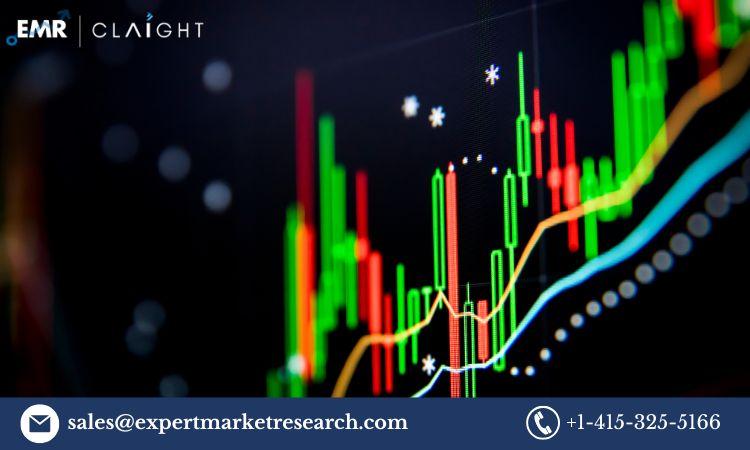The Trade Surveillance System Market plays a crucial role in ensuring transparency and compliance within financial markets. These systems help monitor trading activities, detect suspicious patterns, and ensure adherence to strict regulatory frameworks. As financial markets expand and evolve, the need for efficient trade surveillance systems has intensified. The global trade surveillance system market reached approximately USD 1.36 billion in 2024 and is projected to grow at a CAGR of 18.40% between 2025 and 2034, reaching a value of around USD 7.36 billion by 2034. This growth highlights the increasing demand for advanced technologies to prevent fraud, insider trading, and other market violations.
Market Overview
Trade surveillance systems are designed to monitor and regulate trading activities across various financial institutions, such as banks, exchanges, and asset management firms. These systems detect market manipulations like spoofing, layering, and insider trading. The growing demand for these systems is driven by stringent global regulations, the rise of complex trading strategies, and the integration of advanced technologies like AI and machine learning. These factors are reshaping the trade surveillance system market, enabling institutions to meet compliance standards while enhancing operational efficiency.
Market Segmentation Analysis
By Component
Solutions
Trade surveillance solutions form the core of the market. Major players like NICE CXone Cloud Services, Nasdaq, Inc., and eFlow Ltd. provide comprehensive systems that allow real-time trade monitoring, compliance management, and suspicious activity detection. The integration of AI and machine learning in these solutions boosts their effectiveness in identifying anomalies and irregular trading patterns.
Services
The trade surveillance system market also consists of implementation, consulting, and support services. Companies like Sia Partners and ACA Group provide tailored services to help financial institutions implement and optimize trade surveillance tools. These services are particularly valuable for organizations transitioning to more advanced systems or integrating surveillance with existing platforms.
By Deployment Type
Cloud-Based
Cloud-based solutions are rapidly gaining popularity within the trade surveillance system market due to their scalability, lower upfront costs, and ease of deployment. Cloud providers such as NICE CXone Cloud Services enable small and medium-sized enterprises (SMEs) to access advanced trade surveillance technology without significant capital investment.
On-Premises
For larger financial institutions, on-premises deployment remains a preferred option. These systems provide greater control over data security and compliance. Major players like IBM Corporation and OneMarketData, LLC specialize in offering high-performance, on-premises surveillance solutions that cater to the needs of large-scale organizations.
By Organization Size
Small and Medium-Sized Enterprises (SMEs)
SMEs are increasingly adopting cloud-based trade surveillance systems to meet regulatory requirements in a cost-effective manner. Providers like eFlow Ltd. offer flexible, scalable solutions that are tailored to the unique needs of smaller institutions.
Large Enterprises
Large financial institutions require robust and sophisticated surveillance systems capable of handling vast volumes of transactions. Companies such as Nasdaq, Inc. and Software AG provide advanced trade surveillance solutions designed to accommodate large-scale operations and complex trading environments.
By Vertical
Banking
The banking sector is a major adopter of trade surveillance systems, driven by the need for compliance with anti-money laundering (AML) regulations, fraud prevention, and transaction monitoring. Companies like ACA Group and IPC Systems, Inc. provide specialized surveillance tools to help banks meet regulatory demands.
Capital Markets
Exchanges, brokerage firms, and trading platforms rely heavily on trade surveillance systems to ensure market integrity and prevent manipulation. Providers like Aquis Exchange and Nasdaq, Inc. are leaders in delivering surveillance solutions for capital markets to ensure fair trading practices.
Others
The trade surveillance system market is also expanding in emerging sectors such as fintech and decentralized finance (DeFi). As these sectors grow, the demand for robust surveillance systems to maintain transparency and meet regulatory requirements is on the rise.
Regional Analysis
North America
North America dominates the trade surveillance system market due to stringent regulations like the Dodd-Frank Act and the presence of major industry players such as IBM Corporation and Nasdaq, Inc. These regulations ensure the need for comprehensive surveillance systems in financial markets.
Europe
Europe’s trade surveillance system market is driven by regulations like MiFID II and GDPR. Companies like Aquis Exchange and Software AG are expanding their presence in the region, offering surveillance solutions tailored to European market dynamics.
Asia Pacific
The financial markets in Asia Pacific, particularly in countries like China, India, and Japan, are growing rapidly, which is driving the adoption of trade surveillance systems. Both global and regional providers are increasing their market share in the region.
Middle East and Africa
The trade surveillance system market in the Middle East and Africa is still in its nascent stages but is showing signs of growth due to increasing regulatory reforms and the development of financial markets.
Latin America
In Latin America, particularly in Brazil and Mexico, the financial sector is experiencing growth, driving demand for trade surveillance systems. Regulatory changes are also prompting financial institutions in the region to adopt more sophisticated surveillance solutions.
Market Dynamics
Drivers
-
Regulatory Compliance
The implementation of global regulations, including MiFID II, Dodd-Frank, and Basel III, is a key driver of growth in the trade surveillance system market. Financial institutions must adopt surveillance tools to meet regulatory requirements and avoid penalties. -
Technological Advancements
The incorporation of AI and machine learning into trade surveillance systems is enhancing their ability to detect complex and sophisticated market manipulation tactics. These technologies enable real-time monitoring and proactive detection of anomalies. -
Market Complexity
With the rise of algorithmic trading, high-frequency trading, and multi-asset platforms, financial markets have become increasingly complex. This complexity drives the need for more sophisticated trade surveillance systems capable of handling these advanced trading strategies.
Challenges
-
High Costs of Implementation
The cost of implementing on-premises trade surveillance systems can be a significant barrier, particularly for smaller institutions that cannot afford large-scale, capital-intensive solutions. -
Data Security Concerns
While cloud-based solutions are gaining popularity, data security remains a concern, especially when dealing with sensitive financial information. Institutions must ensure that the systems comply with security regulations. -
Integration with Legacy Systems
Financial institutions with legacy infrastructure face challenges in integrating new trade surveillance systems with their existing platforms. The complexity of this integration can delay system deployment and impact efficiency.
Opportunities
-
Growth in Emerging Markets
As financial markets expand in regions such as Asia Pacific and Latin America, there is a significant opportunity for growth in the trade surveillance system market. These regions are seeing increasing regulatory requirements that drive demand for advanced surveillance tools. -
AI and Machine Learning
The integration of AI and machine learning into trade surveillance systems presents an opportunity to offer more efficient, automated, and proactive solutions that can detect and mitigate market abuse faster than traditional methods. -
SME Adoption of Cloud Solutions
Cloud-based trade surveillance systems present a growing opportunity for SMEs to adopt advanced compliance tools without the high costs of on-premises systems.
Competitive Landscape
The trade surveillance system market is competitive, with several key players driving innovation and expanding their market presence. Leading companies include:
- Software AG: Known for providing advanced data integration and surveillance solutions.
- NICE CXone Cloud Services: A leader in cloud-based, AI-driven surveillance platforms.
- IBM Corporation: Offers high-performance, on-premises solutions for large financial institutions.
- Nasdaq, Inc.: Provides comprehensive surveillance tools tailored to the capital markets sector.
- OneMarketData, LLC: Specializes in real-time monitoring and analytics for trading activities.
- ACA Group: A leader in compliance consulting and implementation services for financial firms.
- IPC Systems, Inc.: Known for its communication and compliance systems for trading.
- Sia Partners: Provides consultancy services to optimize trade surveillance strategies.
- Aquis Exchange: A key player ensuring transparency and market integrity through surveillance tools.
- eFlow Ltd.: Offers affordable and flexible trade surveillance solutions for SMEs.

